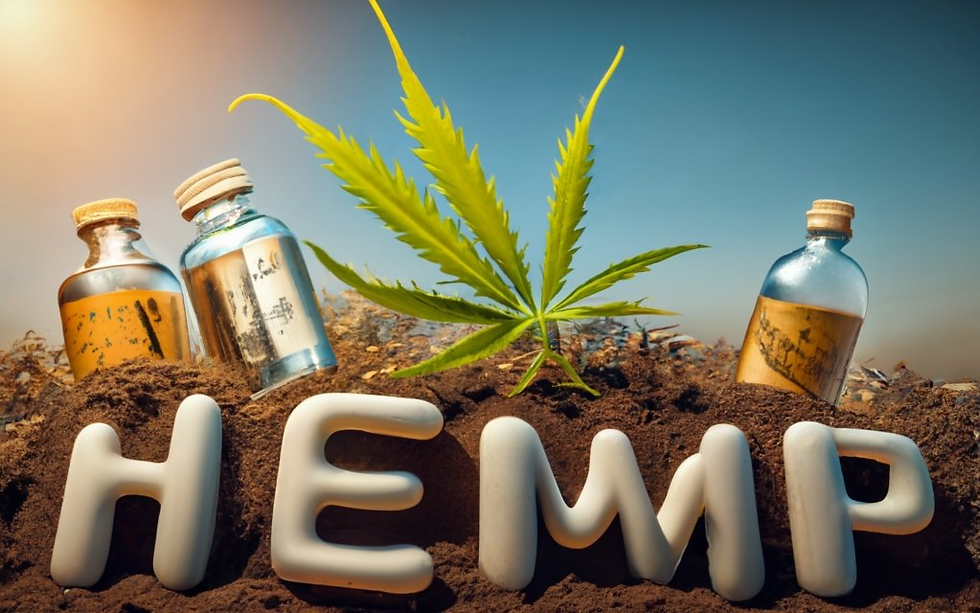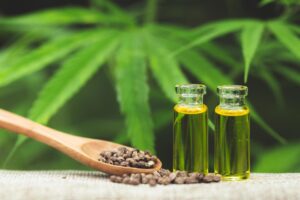In a world drowning in plastic waste, where oceans choke on discarded bottles and landfills overflow with indestructible wrappers, a humble plant is emerging as a game-changer. Hemp, often misunderstood due to its cannabis cousin, is now spearheading a revolution in sustainable packaging. Hemp-based bioplastics, derived from the sturdy stalks of this versatile crop, promise to transform how we wrap, store, and ship goods in the 21st century. Unlike petroleum-derived plastics that linger for centuries, these innovative materials break down naturally, offering a lifeline to our planet. With global plastic production hitting 400 million tons annually and only 9% recycled, the need for alternatives is urgent. Hemp bioplastics not only reduce reliance on fossil fuels but also harness a plant that grows rapidly, sequesters carbon, and requires minimal resources. As consumer demand for eco-friendly options surges, this green innovation is poised to reshape industries, from food packaging to electronics. Imagine a coffee cup that composts in your backyard or a shipping box that feeds the soil— that’s the magic of hemp at work.
From Ancient Crop to Modern Marvel: The Hemp Renaissance
Hemp’s story is as old as civilization itself, woven into sails, ropes, and paper for millennia. Ancient Chinese texts from 2800 BCE praise its durability, while Henry Ford experimented with hemp-plastic car parts in 1941, envisioning a future powered by farm-grown materials. Fast-forward to today, and hemp is reclaiming its throne amid climate crises. Banned in many places during the 20th century due to marijuana associations, its industrial revival began with legalization waves, like the 2018 U.S. Farm Bill. Now, hemp cultivation spans over 500,000 acres globally, yielding fibers richer in cellulose than wood or cotton. This cellulose, making up 65-70% of hemp stalks, forms the backbone of bioplastics, turning a once-stigmatized plant into a sustainability superstar. What makes hemp stand out? It thrives in diverse climates, matures in 12-14 weeks, and yields four times more biomass per acre than trees. No wonder innovators are flocking to it, blending tradition with cutting-edge tech to combat the 8.3 billion tons of plastic produced since the 1950s, much of which still haunts our environment.
The Alchemy of Hemp: Crafting Eco-Friendly Plastics
Turning hemp into plastic is like nature’s own chemistry lab, starting with the plant’s robust stalks. Farmers harvest mature hemp, then decorticate the stems to separate long fibers and woody hurd. These components are pulped and processed to extract cellulose, often by crushing, soaking in mild acids, and rinsing to isolate nanocrystals. Blended with natural binders like hemp oil or plant-based resins, the mixture is heated, molded, or extruded into sheets, films, or containers. For fully biodegradable versions, it’s 100% hemp-derived; hybrids mix 30-40% hemp fibers with recycled polymers for enhanced strength. The result? Materials five times stiffer and 2.5 times stronger than polypropylene, yet lightweight and moldable. Production avoids harsh petrochemicals, using 22-45% less energy than traditional methods. Innovations like adding seaweed or starch further boost properties, creating fire-resistant or UV-blocking variants. This process not only minimizes waste but also leverages hemp’s low-input farming—no pesticides, half the water of cotton—making it a closed-loop wonder.
Green Stats That Pack a Punch: Hemp vs. Traditional Plastics
The numbers tell a compelling tale of transformation. Traditional plastics emit up to 1.8 tons of CO2 per ton produced, contributing to 3.4% of global greenhouse gases. Hemp bioplastics slash this by 66%, absorbing four times more CO2 during growth than trees and returning carbon to soil upon decomposition. They biodegrade in 3-6 months, versus 450 years for petroleum plastics, preventing microplastic pollution that now taints 80% of tap water worldwide. Strength-wise, hemp composites boast tensile strengths up to 350 MPa, outpacing many synthetics while being 20% lighter. Environmentally, hemp farming sequesters 10-15 tons of CO2 per hectare, remediates soil, and uses 75% less water than cotton. Market-wise, the global hemp bioplastic sector, valued at $83.5 million in 2021, is skyrocketing toward $290.7 million by 2031 at a 13.6% CAGR, outpacing the broader bioplastics market’s 11% growth. In packaging alone, it claims a 31.7% share in U.S. and Europe by 2025, driven by bans on single-use plastics in over 60 countries. These stats aren’t just figures—they’re proof hemp is punching above its weight in the fight for a cleaner planet.
Real-World Heroes: Hemp Bioplastics in Action
Across industries, hemp bioplastics are already saving the day. Sana Packaging crafts cannabis containers from reclaimed ocean plastic and hemp blends, reducing waste in an eco-conscious niche. The Hemp Plastic Company supplies low-carbon alternatives for bottles and bags, used by brands like Lego, which aims for hemp-based bricks by 2030. In food packaging, companies like Hemployd produce biodegradable films for snacks and produce, extending shelf life without toxins like BPA. Automotive giants experiment with hemp composites for dashboards, as Ford did decades ago, cutting vehicle weight by 10% for better fuel efficiency. Even frisbees and phone cases from firms like ZeaPlast showcase durability—imagine tossing a disc that composts if lost. In Europe, hemp trays replace styrofoam in supermarkets, while Australian startups mold eco-bottles that decompose in months. These trailblazers prove hemp isn’t hypothetical; it’s packaging perishables, protecting products, and preserving the planet, one innovative application at a time.
Hurdles on the Horizon: Challenges Facing Hemp Innovation
No revolution is without roadblocks, and hemp bioplastics face their share. Production costs remain 2-3 times higher than traditional plastics due to limited infrastructure and complex processing, like lignin removal. Legal hurdles persist in regions where hemp cultivation is restricted, stifling supply chains. Scalability is an issue—meeting global packaging demands could strain farmland, risking biodiversity if not managed sustainably. Technical limitations, such as lower flexibility for certain applications, require ongoing R&D. Competition from subsidized corn or soy bioplastics undercuts prices, while consumer skepticism about “greenwashing” demands transparency. Despite these, solutions are emerging: government incentives, like EU subsidies for bio-materials, and tech advancements promise cost reductions. Overcoming these barriers will demand collaboration, but the payoff—a plastic-free future—is worth the fight.
A Biodegradable Tomorrow: The Promising Path Ahead
Peering into the crystal ball, hemp bioplastics gleam with potential. By 2030, they could capture 40% of the plastics market as regulations tighten and tech evolves. Projections show the industrial hemp sector hitting $30 billion by 2029, fueling bioplastic growth. Innovations like nanotechnology-enhanced fibers will yield smarter, self-healing materials for advanced packaging. As climate goals intensify, corporations pledging net-zero will pivot to hemp, creating jobs in rural areas and circular economies. Imagine smart labels that biodegrade or edible films for food— the possibilities are endless. With consumer spending on sustainable goods up 71% since 2020, demand will drive supply. Hemp’s future isn’t just green; it’s a thriving, resilient ecosystem reshaping packaging for generations.
Join the Revolution: Embracing Hemp for a Sustainable World
As we wrap up, it’s clear hemp-based bioplastics aren’t just an alternative—they’re the evolution packaging needs. From reducing carbon footprints to curbing ocean pollution, this plant-powered innovation offers hope in a plastic-plagued era. By choosing hemp products, supporting policies, and spreading awareness, we can accelerate this shift. The 21st century demands bold steps; let’s make hemp the norm, not the novelty, for a healthier planet.
Revolutionize Your Packaging Line with NanoHempTechLabs’ Hemp-Based Bioplastics!
Step into the 21st-century green revolution with NanoHempTechLabs, where ancient hemp wisdom meets cutting-edge alchemy. Our premium wholesale bioplastics, derived from rapid-growth hemp stalks rich in 65-70% cellulose, deliver unbreakable sustainability: 66% lower CO2 emissions than petroleum rivals, biodegradation in just 3-6 months (versus 450 years), and tensile strength up to 350 MPa—5x stiffer and 2.5x stronger than polypropylene. Outpacing the $83.5M market toward $290.7M by 2031, they sequester 10-15 tons of CO2 per hectare, use 75% less water than cotton, and power eco-innovations from compostable coffee cups to durable shipping crates.
Like trailblazers Sana Packaging and Lego, elevate your brand with our versatile films, bottles, and trays—reducing waste, boosting recyclability, and captivating eco-conscious consumers amid global single-use bans. Wholesale volumes ensure competitive pricing, scalable supply, and custom blends for your needs, all while fostering soil health and circular economies.
Ready to pack a punch for the planet and your profits? Schedule a call with our experts today at nanohemptechlabs.com—unlock samples, quotes, and a greener tomorrow!
Reference:
- (2025). Optimization of bio-based polymer composites using grey relational analysis (gra) method. jame, 3(3), 19-31. https://doi.org/10.46632/jame/3/3/3
- Cherney, J. and Small, E. (2016). Industrial hemp in north america: production, politics and potential. Agronomy, 6(4), 58. https://doi.org/10.3390/agronomy6040058
- Kaur, G. and Kander, R. (2023). The sustainability of industrial hemp: a literature review of its economic, environmental, and social sustainability. Sustainability, 15(8), 6457. https://doi.org/10.3390/su15086457





